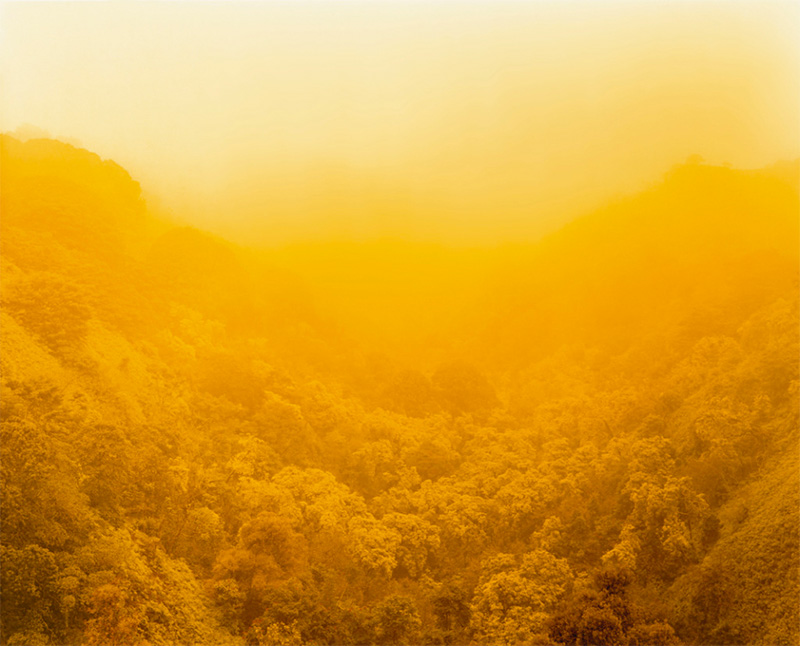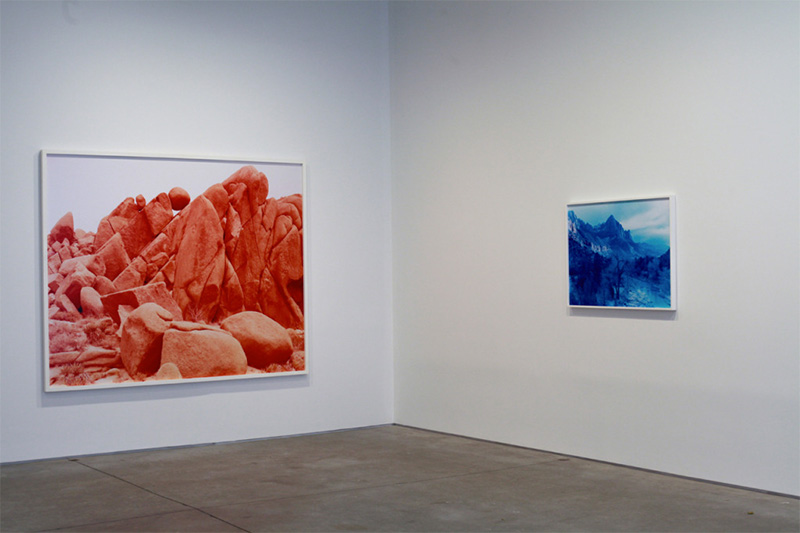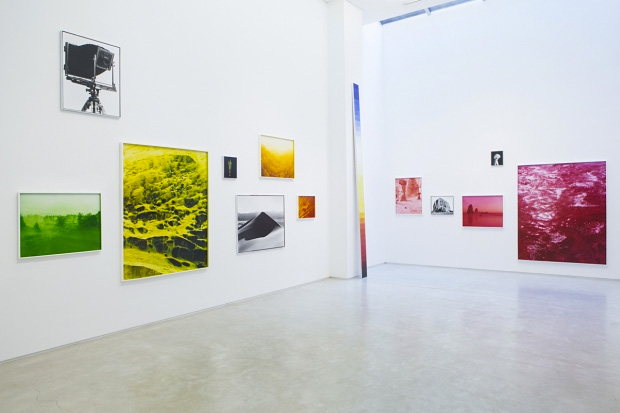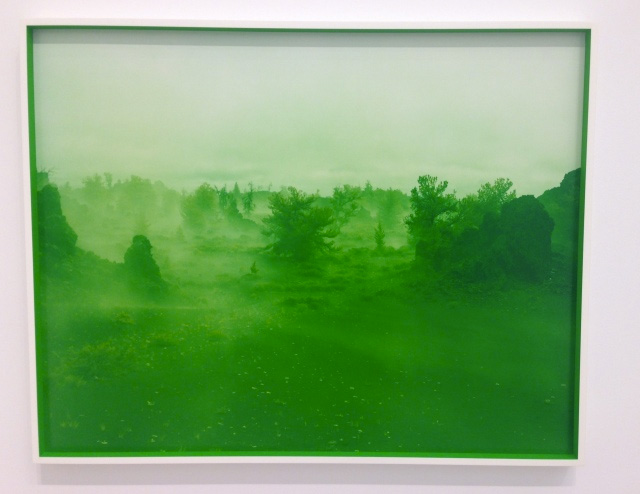
- Source: HYPERALLERGIC
- Author: JEREMY POLACEK
- Date: OCTOBER 17, 2014
- Format: DIGITAL
Photographs of Urgent Wilderness

David Benjamin Sherry, “Climate Vortex Sutra (For Allen Ginsberg)” (Hana, Hawaii, 2014), traditional color darkroom photograph, 30 × 40 in (image courtesy the artist and Salon 94, New York)
Flush with riveting, enigmatic color and luxuriant depth of field, David Benjamin Sherry‘s monochrome photographs radiate beauty, urgency, and a certain humanness — as if their sublime scenes of mountains, forests, and rock formations had been blasted and dyed by a human detonation. People may be absent from these photos, but the sense that the atmosphere is tinged with their emotions and presence, not necessarily joyous or beneficial, is hard to escape.
In Sherry’s recent work, on view in partnering exhibitions at Danziger Gallery and Salon 94 Bowery, a theme burns through the romanticism: a poetic disquiet about change and catastrophe. The photographs can certainly be enjoyed on the strength of their visuals alone; ethereal and transporting, they’re the sort that could be at home in a New York Times Magazine travel issue — images of rock pillars in Monument Valley, almost doughy and supple from their deep blue bath; of Bridal Veil Falls in Yosemite, hazy, purple, otherworldly.
Sherry spends hours in the darkroom, developing, distorting, and coloring these photos, which are largely of the West and southwestern United States. He still shoots in the dying art of analogue, lugging around a large-format 8×10 camera at f/64, that favorite of apertures for Edward Weston, Ansel Adams, Imogen Cunningham, and others of the famed group. He explores and researches locations over long trips and hikes. Old is still old in Sherry’s work, it’s just brought up to date and forced to lie with the present and a looming future. Sherry’s photos are connected to both history and the land.

Installation view, David Benjamin Sherry at Danziger Gallery (image courtesy Danziger Gallery)
Salon 94’s show also includes the artist’s more direct connection with humans and other subjects. Sharing space on the sometimes crowded walls are photos of his camera, a set of rainbow-hued nudes, a self-portrait of the artist in drag (“Adaptive Capacity [Self-Portrait]”), and what is apparently an abstract, huge kelvin thermometer, which rests like a Roni Horn aluminum-text sculpture against a wall. Two other photos layer sensuous black-and-white nude pictures over Sherry’s monochrome trademarks. Among so many striking landscapes, it’s easy to ignore these works that zag away, particularly the image of his camera. And perhaps due to our familiarity with the 1960s and psychedelic culture, it’s difficult to bring the same kind of surprising depth and striking emotional response to human bodies suffused with color. But while they are not as visually compelling or thematically rich (or numerous) as his large-format landscape photos, these outliers are nevertheless connected to them, by color, appearance, material. Ideas slide over from one to another, suggesting sensual lands, topographical terrains, a new — or perhaps ending — era.

“New Life Forms (Pia and Guadalupe),” “The Sixth Extinction (For Elizabeth Kolbert),” “Climate Vortex Sutra (For Allen Ginsberg)” — Sherry’s titles explicitly link his works to poetry and the coming chaos of human-caused climate change and extinction. Climate Vortex Sutra is also the title of the Salon 94 show, a spin on Allen Ginsberg’s Wichita Vortex Sutra, a travelogue lament of dying words and enduring war. Journeying through the Great Plains states, Ginsberg recorded his torrential thoughts about a language beggared by the modern era; he sought, somehow, to give it power or awareness.
Sherry’s project is similar. Working within an old, laborious medium and history, choosing mostly transcendent natural subjects, he too is looking to find ways to make his visions direct, sensuous, powerful, and different. “The color acts as a vehicle to emotional response and intensity that is already in the landscape,” Sherry told Slate. “That’s my intention of it, a type of enhanced reality.” The world is full of countless moving sights; it’s possible to become inured. Sherry’s photographs seek to unearth something new.

David Benjamin Sherry, “Wilderness of Mirrors” (Idaho, 2014) (photo by the author for Hyperallergic)

